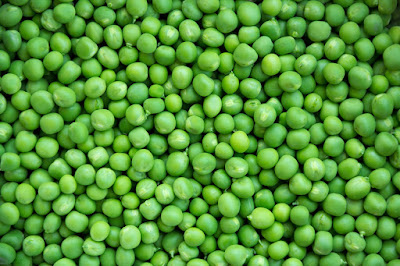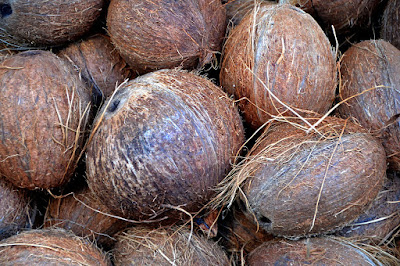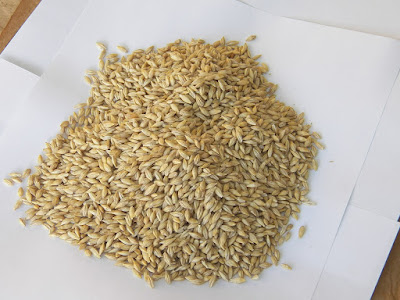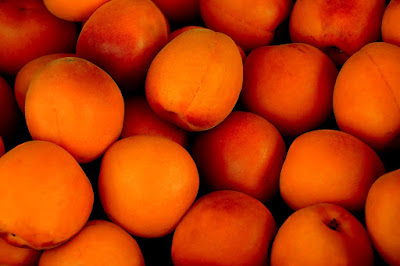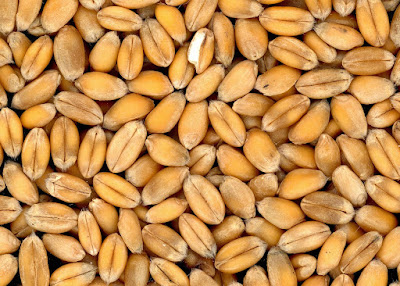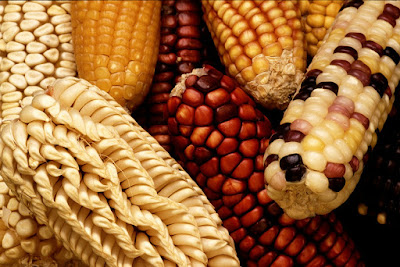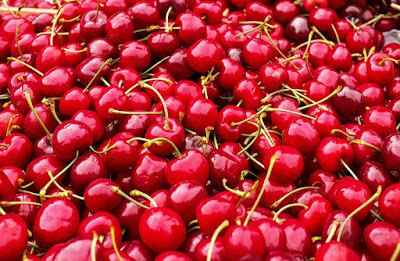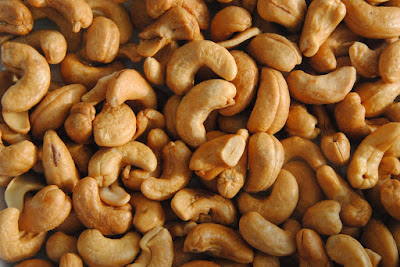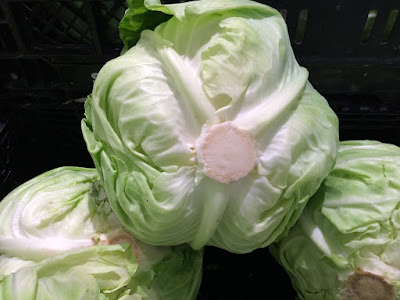It has been a while since an update and the reason has been unprecedented work (from my day job). I promise to be back as soon as possible. Please bear with me.
History of food
Interesting facts about spices, vegetables and fruits. History, production and usage trivia.
Tuesday, 25 October 2016
Saturday, 15 October 2016
5 interesting facts about Bottle Gourd
1. Bottle Gourd is native to
Africa.
2. One of the first
cultivated plants in the world, the initial use was not as a food but as a container
to hold water!
3. Bottle gourd contains cucurbitacins that are known to be cytotoxic at a high concentration.
4. A variety of bottle gourd
is used as the resonator in the making of stringed Indian musical instruments
like the Sitar and the Veena.
5. In Nigeria, round bottle
gourds (called calabashes) have been used to avoid a law requiring the wearing
of a helmet on a motorcycle.
Friday, 14 October 2016
5 interesting facts about Peas
1. Peas are presumed to be native
to Mediterranean region.
2. Botanically, peas are
actually a fruit, although they are classified as a vegetable.
3. China is the world’s
largest producer of peas followed by India.
4. Favabeanism is a genetic
condition related to pea consumption that affects Jews and other Middle Eastern
Semitic people.
5. Pea milk is commercially
produced alternative to cater to people who cannot consume dairy, soy, nut and
gluten products.
Thursday, 13 October 2016
5 interesting facts about Ginger
1. Ginger is native to Southern
Asia.
2. Although normally
classified as a root, Ginger is actually a rhizome.
3. India is the world’s
largest producer of Ginger followed by China.
4. Ginger has a sialagogue action, stimulating the
production of saliva, which makes swallowing easier.
5. When ginger is pickled in
sweet vinegar, it turns pink. This is the ginger often seen accompanying sushi.
Wednesday, 12 October 2016
5 interesting facts about Garlic
1. Garlic is native to Central
Asia.
2. Close relatives of garlic
include the Onion, shallot, leek, chive and rakkyo.
3. China is the world’s
largest producer of Garlic followed by India.
4. While the bulb is the
primary edible part of Garlic, sometimes, the leaves, flowers and head are also
eaten.
5. Due to its antimicrobial
properties, garlic along with cinnamon is used as a fish and meat preservative.
Tuesday, 11 October 2016
5 interesting facts about Coconut
1. The Coconut is native to India.
2. The coconut fruit is
actually a drupe and not a nut as the name indicates.
3. Indonesia is the world’s
largest producer of coconuts, followed by the Philippines.
4. It is said that coconuts
can travel a 110 days or 3,000 miles at sea and still be capable of
germination!
5. Virtually every part of
the coconut tree can be used by humans in some manner and has significant
economic value. This is probably why it is called kalpa vriksha (the tree that provides everything) in Sanskrit and pokok seribu (the tree of a 1,000 uses)
in Malay.
Monday, 10 October 2016
5 interesting facts about Tamarind
1. Tamarind is native to tropical
India and Africa.
2. India is the world’s
largest producer of tamarind followed by Latin America.
3. Despite being a fruit, the
tamarind has a high proportion of calcium!
4. Tamarind contains tartaric
acid. This makes it an excellent agent for metal polishing for copper, bronze
and brass vessels and utensils.
5. In some parts of Ghana,
tamarind pulp is used to make some poisonous yams edible!
Sunday, 9 October 2016
5 interesting facts about Asparagus
1. Asparagus is native to Europe.
2. China is the world’s
largest producer of asparagus followed by Peru.
3. Asparagus is said to be a
useful companion plant for tomatoes.
4. Many German cities hold an
annual asparagus festival. The city of Schwetzingen also crowns an annual "Asparagus Queen!"
5. Emperor Augustus is
credited with having created the "Asparagus Fleet" for hauling the
vegetable in ancient times.
Saturday, 8 October 2016
5 interesting facts about Barley
1. Barley is native to Eurasia.
2. As far as cereal crops go,
barley is at position four – both in terms of quantity produced as well as area
under cultivation.
3. Russia is the world’s
leading producer of Barley followed by Germany.
4. It is said that the
Prophet Muhammed prescribed barley as the cure for seven diseases.
5. Till the 19th
century, barley grains were used as a measurement in England!
Friday, 7 October 2016
5 interesting facts about Coffee
1. Coffee is native to tropical
Africa.
2. Coffee is slightly acidic
and has a stimulating effect on humans because of its caffeine content.
3. Brazil is the world’s
largest producer of coffee followed by Vietnam.
4. Coffee was initially used
for spiritual reasons.
5. Johann Sebastian Bach was
inspired to compose the Coffee Cantana due to his dependence on the beverage!
Thursday, 6 October 2016
5 interesting facts about Tea
1. Tea is native to China
2. After water, Tea is the
most widely consumed drink in the world.
3. China is the world’s
largest producer of Tea, followed by India.
4. Tea is sensitive to and easily
retains odors. This is both a blessing and a curse. Curse because it needs care
during processing and packing and a blessing because of the ease of infusing
various flavors.
5. The flavor of tea can be
altered by pouring it from different heights, which results in varying degrees
of aeration.
Wednesday, 5 October 2016
5 interesting facts about Soybean
1. Soybean is native to East
Asia
2. Soybean produces more significantly
more protein per acre than any other agricultural product.
3. The United States is the world’s
leading producer of Soybean followed by Brazil.
4. Soybeans are also used in
industrial products, including oils, soap, cosmetics, resins, plastics, inks,
crayons, solvents, and clothing.
5. In 1936, the Ford Motor
Company used a mixture of Soybean and fibers were rolled together and pressed
to form various automobile components.
Monday, 3 October 2016
5 interesting facts about Carrots
1. Carrots are said to be native
to Central Asia.
2. China is the world leader
in the production of carrots followed by Uzbekistan.
3. Although usually orange in
color, some naturally occurring species can be purple, black, red, white or
yellow!
4. Spices like parsley,
fennel, dill and cumin are close relatives of the carrot.
5. Excessive consumption of
carrots over a period of time results in a condition called carotenemia characterized by a yellowing
of the skin.
Sunday, 2 October 2016
5 interesting facts about Cauliflower
1. Cauliflower is said to be native
to Italy.
2. China is the world’s
largest producer of Cauliflower followed by India.
3. Apart from the regular
white, naturally occurring species of cauliflower include orange, green and
purple varieties!
4. Cauliflower has fractal
dimension properties – due to which, every branch or module is similar to the
entire cauliflower!
5. Cauliflower can be turned
into flour from which pizza or biscuits are made!
Saturday, 1 October 2016
5 interesting facts about Apricots
1. Apricots are said to be native
to Armenia.
2. Turkey is the world’s
largest producer of apricots followed by Iran.
3. Black or Purple Apricots
are actually a hybrid of an apricot and plum tree. They are variously called
plumcots, apriplums, pluots or apriums!
4. The liqueur Amaretto and
Amaretti biscotti are flavored with an extract of apricot kernels!
5. Apricots belong to the
Rosaceae (rose) family along with other members like apples, pears, plums,
cherries, peaches, raspberries and strawberries.
Friday, 30 September 2016
5 interesting facts about Wheat
1. Wheat is native to the Levant
region.
2. Wheat is grown on more
land area than any other commercial food. Currently, it is second only to rice
as a human food crop.
3. China is the world’s
largest producer of maize followed by India.
4. World trade in wheat is
greater than for all other crops combined!
5. Apart from white and red
wheat, other naturally evolved species include black, yellow and blue wheat!
Thursday, 29 September 2016
5 interesting facts about Maize
1. Maize is native to the Mexico.
2. Maize is biologically a
kernel. It is often erroneously called a seed.
3. The United States is the
world’s largest producer of maize followed by China.
4. Maize ears along with
tobacco leaves are carved into the capitals of columns in the United States
Capitol building.
5. Maize is used as fish bait
in coarse fishing and by hunters as bait for animals like deer and wild hogs.
Wednesday, 28 September 2016
5 interesting facts about Papaya
1. The Papaya is native to the
Tropic of Americas.
2. Papaya plants grown in
three sexes: Male, female and hermaphrodite. All commercial papaya orchards only
contain hermaphrodites.
3. India is the world’s
largest producer of Papaya followed by Brazil.
4. Green Papaya and the tree
latex contain papain which is used to
tenderize meat.
5. The Papaya tree was the
first transgenic fruit tree to have its genome sequenced.
Tuesday, 27 September 2016
5 interesting facts about Cherries
1. The Cherry is native to the
Northern Hemisphere (America, Europe and Asia).
2. The Cherry is part of the
Rosaceae family. Other members of this family include almonds, peaches,
apricots, plums and of course, roses!
3. Turkey is the world’s
leading producer of Cherry followed by the United States.
4. A chemical reaction
between cherries and alkaline products like baking powder causes a blue
discoloration in baked goods.
5. The wood of some cherry
trees is especially esteemed for the manufacture of fine furniture.
Monday, 26 September 2016
5 interesting facts about Cashew nuts
1. The Cashew nut tree is
native to Brazil.
2. Vietnam is the world’s
largest producer of Cashew Nuts, followed by Nigeria.
3. The shell of the Cashew
Nut contains oil compounds which cause contact dermatitis. This is similar in
intensity to that caused by poison ivy!
4. In traditional Mayan
medicine, the leaves and bark of the Cashew tree are used in a tea to treat
diarrhea!
5. Alcoholic drinks can be
produced by fermenting the cashew apple.
Sunday, 25 September 2016
5 interesting facts about Peanuts
1. Peanuts are native to South
America.
2. The Peanut is not really a
nut. Biologically, it is classified as a legume. However, for culinary reasons it
is accepted as a nut.
3. China is the world’s
leading producer of peanuts followed by India.
4. Paint, varnish, furniture
polish, insecticides, soap, cosmetics and nitroglycerin are some industrial products made
with peanut oil.
5. Peanuts can also be used
to make peanut-milk, a kind of lactose-free milk like beverage that helps fight
malnutrition in Africa.
Saturday, 24 September 2016
5 interesting facts about Beetroot
1. Beetroot is presumed to be
native to Scandinavia.
2. The original beet roots
were long and thin like carrots. The modern round beetroot is presumed to have
appeared only after the 16th century.
3. Russia is the world’s
largest producer of beetroot followed by France.
4. Apart from being used as
food, beetroot is commonly used as a coloring agent and as medicine.
5. Beetroot can also be used
to make wine!
Friday, 23 September 2016
5 interesting facts about Spinach
1. Spinach is native to Ancient
Persia.
2. Spinach is related to
beets and belongs to the same family!
3. China is the world’s
leading producer of Spinach followed by the United States.
4. Spinach contains an
appreciable amount of iron. However it also contains oxalate – an iron-absorption
inhibiting substance!
5. The cartoon character
Popeye is credited in increasing US domestic consumption of spinach. Crystal
City, Texas has a statue of him!
Thursday, 22 September 2016
5 interesting facts about Cabbage
1. Cabbage is most likely
native to Europe.
2. China is the world’s
largest producer of cabbages followed by India.
3. The characteristic flavor
of cabbage is caused by glucosinolates,
a class of sulfur-containing glucosides.
When cabbage is overcooked, hydrogen sulfide
gas is produced!
4. In cuisine, cabbages can
be boiled, steamed, stewed, sautéed, braised, pickled, fermented for use in
Sauerkraut, or even eaten raw!
5. The ancient Romans described the medicinal properties of cabbage, recommending it
to counter drunkenness and cure hangovers!
Subscribe to:
Comments (Atom)

